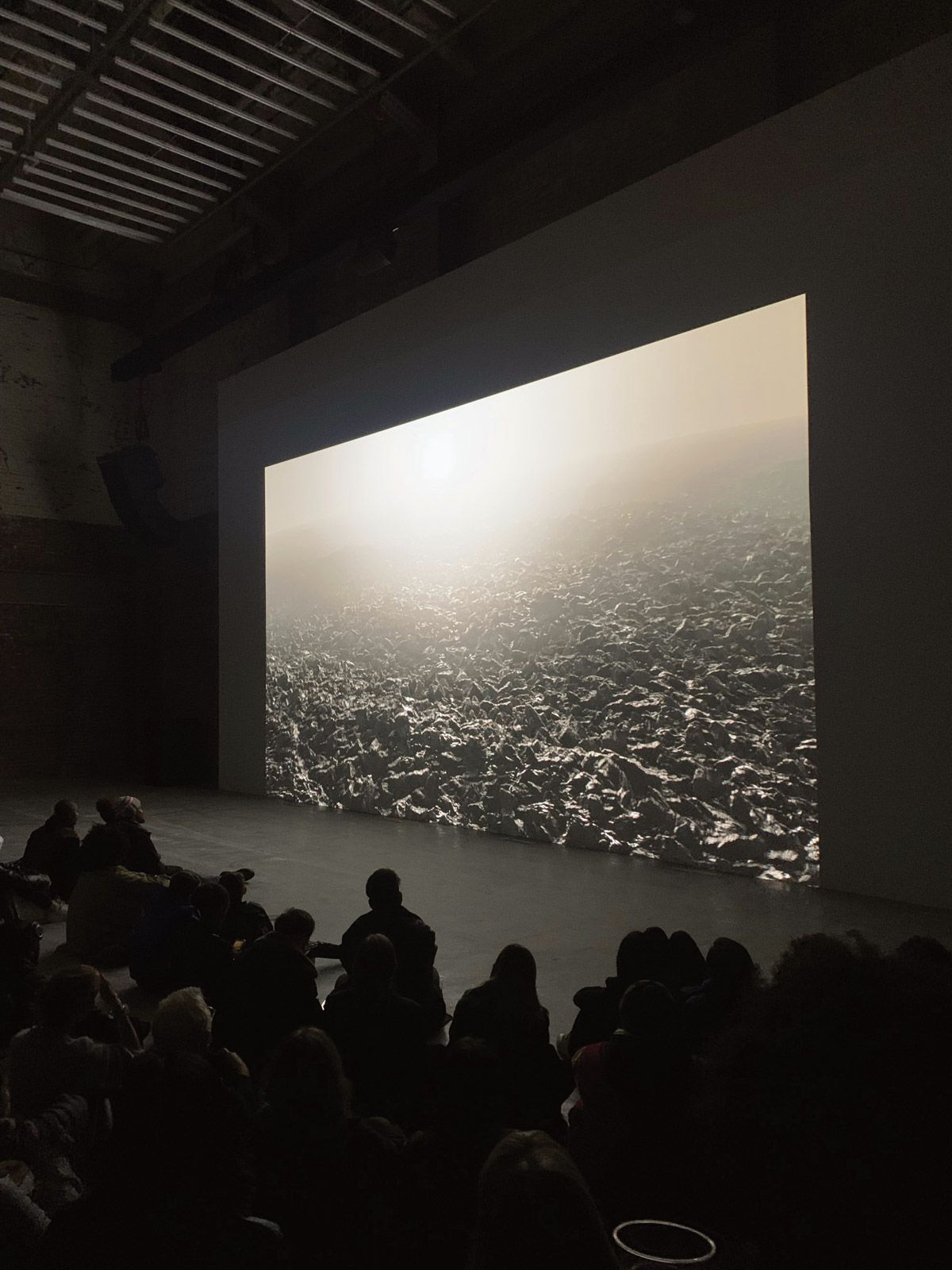If you are an artist who makes an acknowledged masterpiece, what do you do for a follow-up? Do you meet the considerable expectations it raises or defy them? If you’re Arthur Jafa, you go against the tide. Literally.
Oceanic swells of black, volcanic rocks filled a screen two-storeys tall at the US premiere of Jafa’s AGHDRA (pronounced agh-ee-druh), a digital animation that is screening in the same Harlem space where his supercharged, seven-minute film Love is the Message, the Message is Death debuted in 2016: the former Gavin Brown’s Enterprise. The gallery has been closed since March of last year, when all of New York went into lockdown.
By the time the city came back to life, Brown had merged his boundary-pushing programme with that of the venerable dealer Barbara Gladstone, who then asked Jafa to curate a show of photographs culled from the estate of Robert Mapplethorpe, which her gallery represents. A very cool merge if ever one was.
As it happens, Brown’s name was still on the lease in Harlem and his landlord was amenable to a month-long residency. “We couldn’t have done this anywhere else,” Brown said of the onetime beer distillery at the opening, where Gladstone was one of two or three hundred vaccinated guests helping themselves to a seafood stew prepared by the artist Rirkrit Tiravanija and his students from Columbia University. For them, this event was a class. For the rest of us, it was both a nostalgic return to a beloved place and a path to the undulating, post-human world imagined in AGHDRA.
Jafa derived the title from a pre-pandemic trip to Tokyo with his teenage son. Its multiple references include monster movies like Godzilla and Mothra, both originally made in response to Japan’s devastation by US atomic bombs. But music had the greater influence, specifically Agharta, the concert album recorded in Osaka by Miles Davis in 1975, when his fusion of rock, jazz and blues outraged purists and attracted a younger generation, including the now 60-year-old Jafa.
Davis’s refusal to cater to his base, so to speak, is very present in AGHDRA, which Jafa created with BUF, the French special effects company responsible for the visual dazzle of the 1999 film The Matrix. Jafa’s new work does away with the machine-gun barrage of downloaded imagery that characterised his powerfully affecting Love is the Message, as well as akingdoncomethas and The White Album (both 2018). This time he opts for the equivalent of a stationary camera. “I don’t want to be boxed in as a download artist,” Jafa told me, adding: “I’m sensitive to fixed identities or trapped by my own construction.” He did, however, express appreciation for the impassioned public response to The Message. “Sometimes,” he said, “people teach me things about the work that I wasn’t consciously aware of when I made it.”
Also absent from the new work are human figures, although the implication that human activity is responsible for the sea erupting under the watchful setting sun and rising moon is clear. “It made me think of a tsunami of waste,” the independent curator Valerie Smith commented at the screening. “It’s scary.”
Davis’s intensity and flexibility as an artist—“not a husband”, Jafa was quick to add—presides over the soundtrack, where echoes of the musician’s syntax ride the waves of sound that accompany, and play against, the tectonic movement of the jagged seascape onscreen. Arias of electronic static, low-frequency hums and gut-humping rumbles alternate with the rhythms of 1970s R&B standards that Jafa has elongated past recognition by producing them at a speed that a snail would envy. The slo-mo pace reveals what Jafa called “the soulfulness of the Black voice”, the way photographs by Eadweard Muybridge make the intricate concert of a body’s movements visible.
Any direct reference to the joys and terrors of Black life in America, Jafa’s usual subject, is embedded in the “ontology of Blackness” anchoring every sequence here, where the Middle Passage of Africans shipped to the Americas by slavers lies just beneath the inky surface. “I thought about asking BUF for an ocean of chains,” Jafa told me. He rejected the idea: “too literal”, he said.
AGHDRA is an attempt to reckon with that trauma, a function of the horror movies during Japan’s post-war rebirth. By melding the spirit of a John Coltrane improvisation with a Turner painting, Jafa’s film evokes the yawning space that exists between past and future worlds.
Viewers prone to seasickness might want to take a pill.
• Arthur Jafa: AGHDRA is on view at 439 W 127th Street, New York, until 5 December


